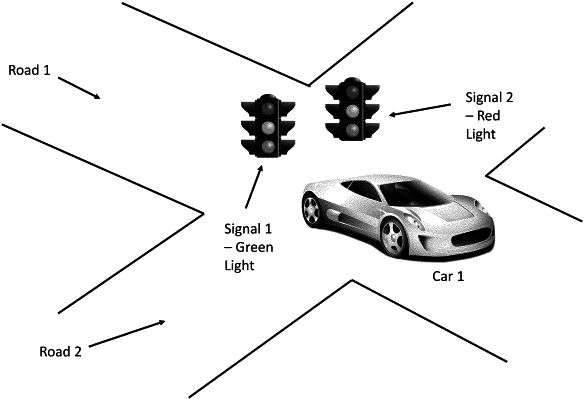| CPC G08G 1/087 (2013.01) [H04R 1/08 (2013.01); H04R 1/406 (2013.01); H04R 3/005 (2013.01)] | 16 Claims |

|
1. An electronic communications method, comprising:
receiving, by a device, first electronic information, wherein:
the first electronic information is from a first microphone,
the first electronic information is based on a first audible sound from a first vehicle that is approaching a first traffic light at an intersection,
the first electronic information is sent during a first particular period of time, and
the first microphone is connected to a pole with the attached first traffic light;
receiving, by the device, second electronic information, wherein:
the second electronic information is from a second microphone,
the second electronic information is based on a second audible sound from a second vehicle that is approaching a second traffic light at the intersection,
the second electronic information is sent during a second particular period of time,
the second particular period of time is different than the first particular period of time, and
the second microphone is connected to a building;
analyzing, by the device, the first electronic information and the second electronic information, wherein the analyzing includes:
the device using Convolutional Neural Networks (CNN) and Long Short Term Memory (LSTM) systems to analyze the first electronic information and the second electronic information,
analyzing previously received noise information that occurred at other discreet time events,
analyzing stored sounds from non-emergency vehicles,
analyzing other stored sounds from emergency vehicles,
analyzing additional stored sounds, wherein the additional stored sounds are based on vehicle engine size,
determining a first vehicle type based on the first electronic information, the stored sounds, the other stored sounds, the additional stored sounds, and the previously received noise information,
determining a second vehicle type based on the second electronic information, the store sounds, the other stored sounds, the additional stored sounds, and the previously received noise information;
determining, by the device, that the first vehicle type has priority over the second vehicle type to pass through the intersection;
sending, by the device, a first electronic command to the first traffic light to change, or stay, red; and
sending, by the device, a second electronic command to the second traffic light to change, or stay, green.
|